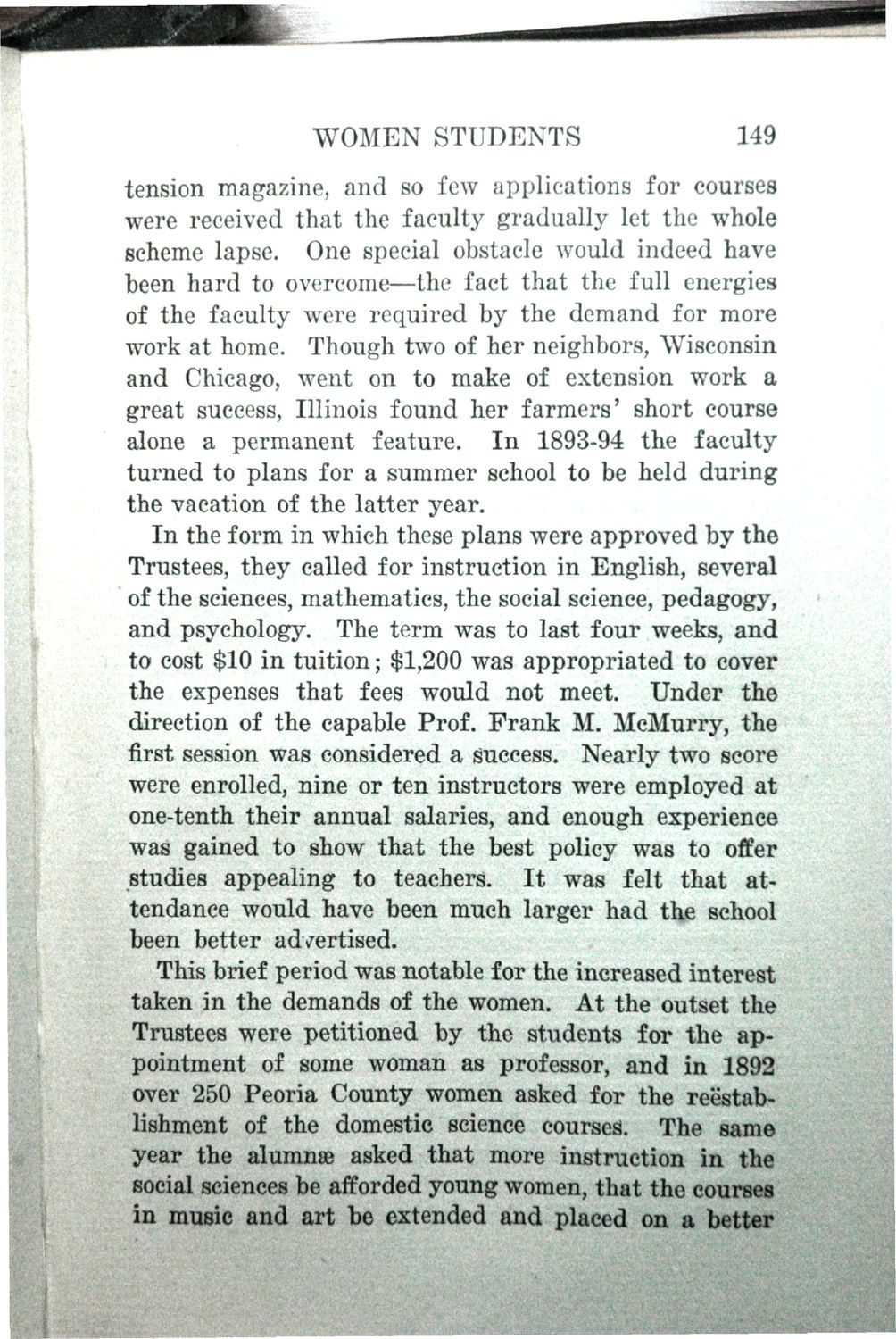| |
| |
Caption: Book - History of the University (Nevins)
This is a reduced-resolution page image for fast online browsing.

EXTRACTED TEXT FROM PAGE:
WOMEN STUDENTS 149 tension magazine, and so few applications for courses were received that the faculty gradually let the whole scheme lapse. One special obstacle would indeed have been hard to overcome—the fact that the full energies of the faculty were required by the demand for more work at home. Though two of her neighbors, Wisconsin and Chicago, went on to make of extension work a great success, Illinois found her farmers' short course alone a permanent feature. In 1893-94 the faeulty turned to plans for a summer school to be held during the vacation of the latter year. In the form in which these plans were approved by the Trustees, they called for instruction in English, several of the sciences, mathematics, the social science, pedagogy, and psychology. The term was to last four weeks, and to cost $10 in tuition; $1,200 was appropriated to cover the expenses that fees would not meet. Under the direction of the capable Prof. Frank M. McMurry, the first session was considered a success. Nearly two score were enrolled, nine or ten instructors were employed at one-tenth their annual salaries, and enough experience was gained to show that the best policy was to offer studies appealing to teachers. It was felt that attendance would have been much larger had tlje school been better advertised. This brief period was notable for the increased interest taken in the demands of the women. At the outset the Trustees were petitioned by the students for the appointment of some woman as professor, and in 1892 over 250 Peoria County women asked for the reestablishment of the domestic science courses. The same year the alumna? asked that more instruction in the social sciences be afforded young women, that the courses in music and art be extended and placed on a better
| |